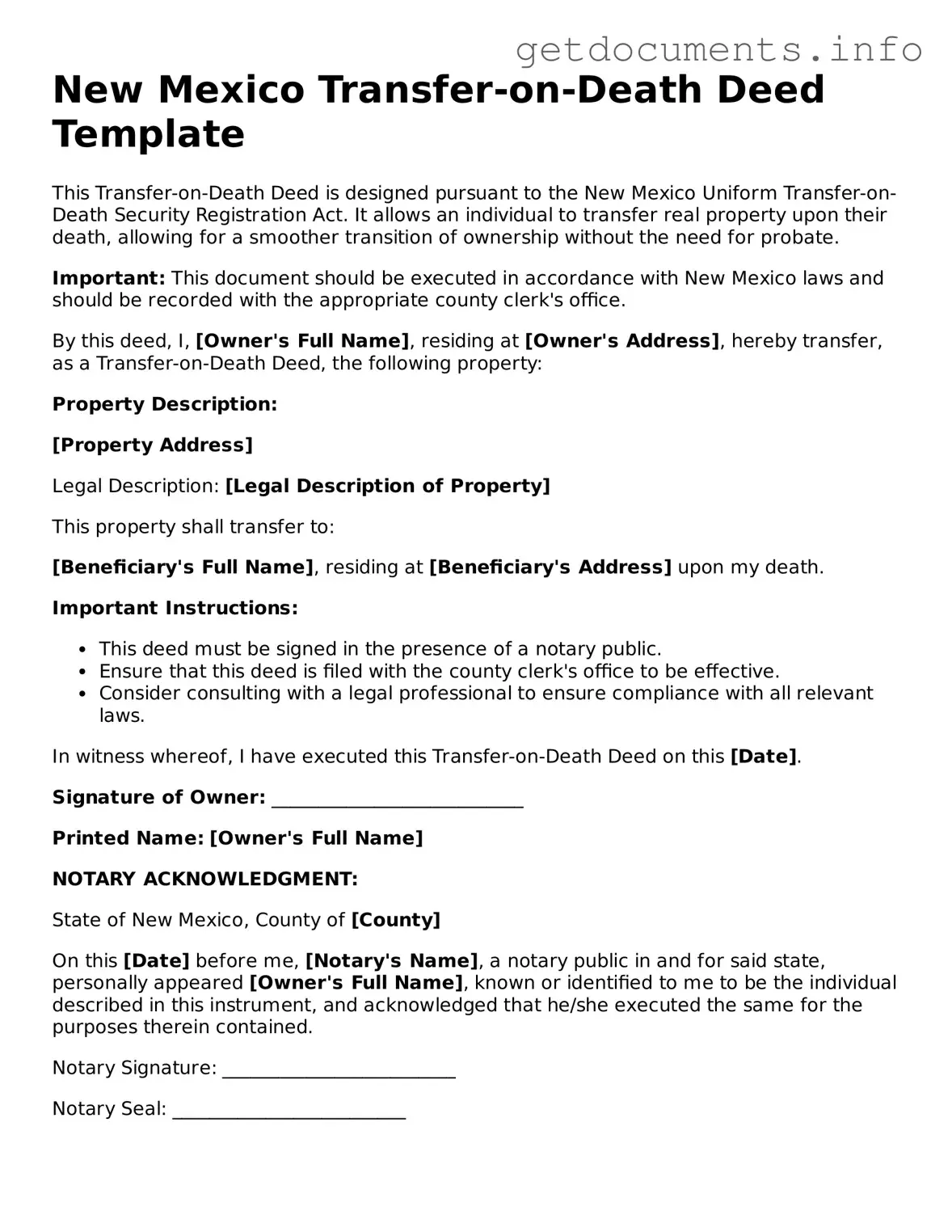The Transfer-on-Death Deed (TOD) form in New Mexico serves as a valuable estate planning tool, allowing property owners to designate beneficiaries who will receive their real estate upon their passing, without the need for probate. This form simplifies the transfer process, providing a clear and straightforward mechanism for property distribution. By completing the TOD deed, individuals can retain full ownership of their property during their lifetime, ensuring they have the flexibility to sell or modify the property as they see fit. Upon the owner's death, the designated beneficiaries can claim the property directly, streamlining the transition and minimizing potential disputes among heirs. It is important for property owners to understand the specific requirements and implications of this form, including the necessity for proper execution and recording to ensure its validity. Additionally, the TOD deed can be revoked or amended at any time before the owner's death, offering peace of mind and adaptability in estate planning. Overall, the Transfer-on-Death Deed represents an efficient option for New Mexico residents looking to manage their property and provide for their loved ones in a straightforward manner.
